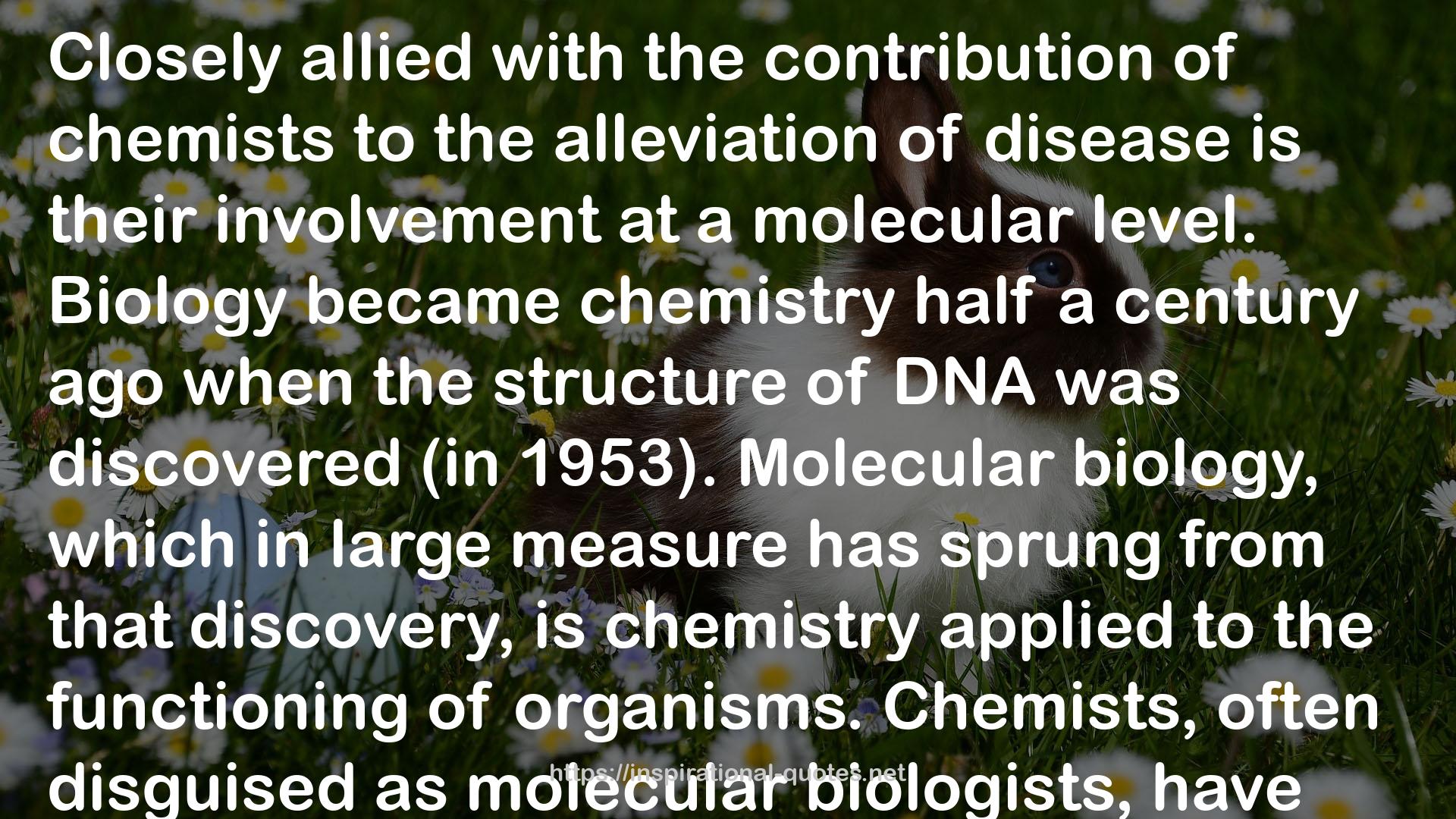Chemistry: A Very Short Introduction QUOTES
4 " One of the most powerful tools for discovering structure is ‘X-ray diffraction’ or, because it is always applied to crystals of the substance of interest, ‘X-ray crystallography’. The technique has been a gushing fountain of Nobel prizes, starting with Wilhelm Röntgen’s discovery of X-rays (awarded in 1901, the first physics prize), then William and his son Laurence Bragg in 1915, Peter Debye in 1936, and continuing with Dorothy Hodgkin (1964), and culminating with Maurice Wilkins (but not Rosalind Franklin) in 1962, which provided the foundation of James Watson’s and Francis Crick’s formulation of the double-helix structure of DNA, with all its huge implications for understanding inheritance, tackling disease, and capturing criminals (a prize shared with Wilkins in 1962). If there is one technique that is responsible for blending biology into chemistry, then this is it. Another striking feature of this list is that the prize has been awarded in all three scientific categories: chemistry, physics, and physiology and medicine, such is the range of the technique and the illumination it has brought. "

